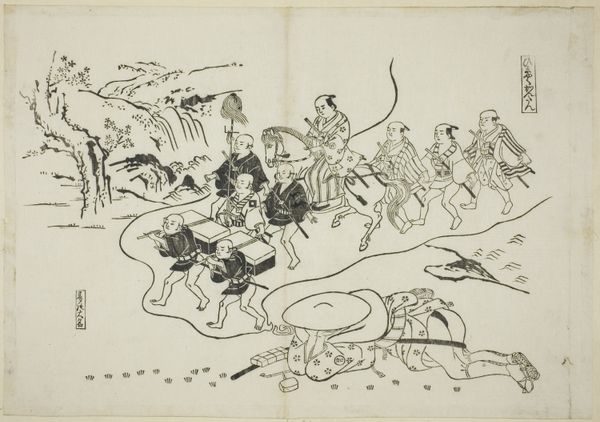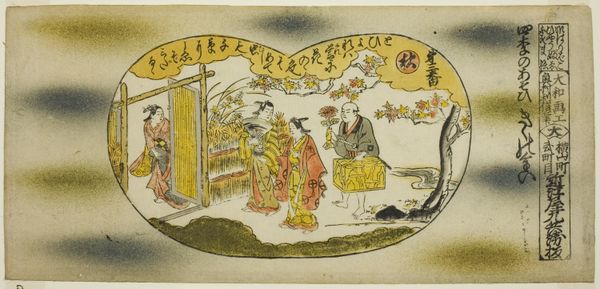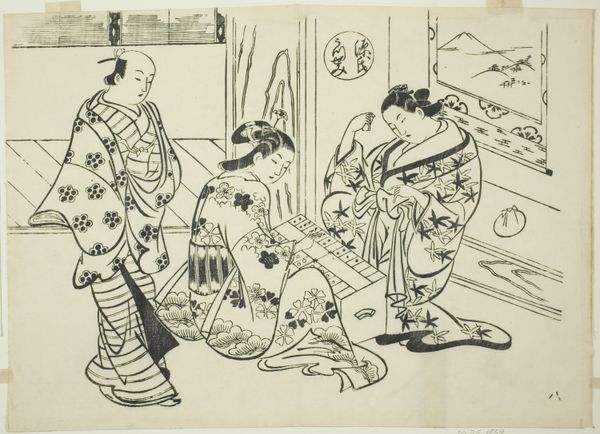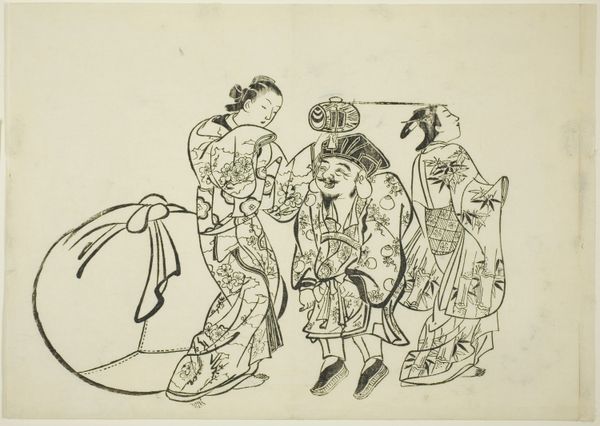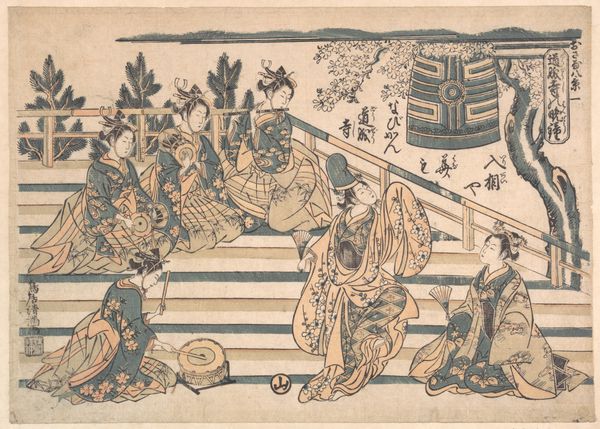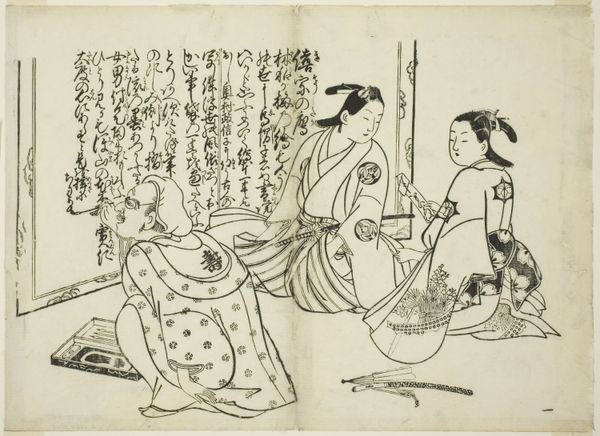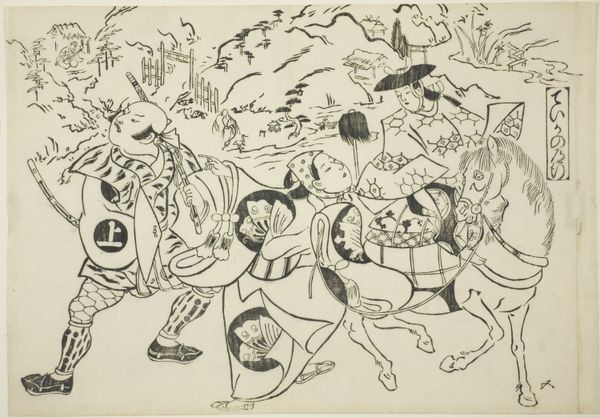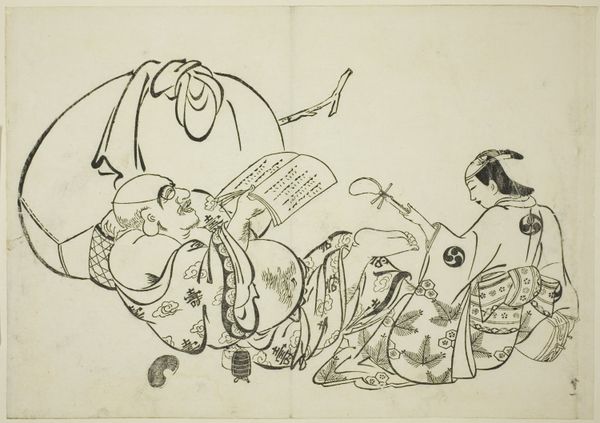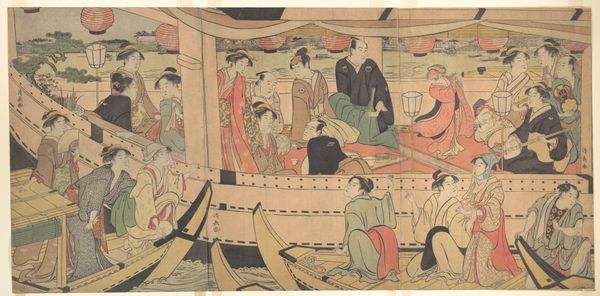
The Noda Jewel River, from a hexaptych depicting the Six Jewel Rivers c. 1781 - 1789
0:00
0:00
print, ink
#
ink painting
# print
#
asian-art
#
landscape
#
ukiyo-e
#
figuration
#
ink
#
genre-painting
Copyright: Public Domain
Kubo Shunman’s ‘The Noda Jewel River’ depicts a serene landscape populated by figures in traditional garb. The river itself, a recurring motif in Japanese art, symbolizes the transient nature of life. Observe the way Shunman portrays the figures near the water’s edge. The water's reflective quality can be seen as a symbol of introspection, urging viewers to consider their own reflections and mortality. This motif echoes in countless other works of art across cultures. Think of Narcissus gazing at his reflection in Greek mythology, a story that explores themes of self-obsession and the fleeting nature of beauty. The ephemeral quality of the river reflects the shifting sands of time, an emotional and psychological undercurrent that flows through much of human experience. By capturing this moment, Shunman taps into a collective memory of transience, a feeling that resonates on a deep, subconscious level. This image invites us to reflect on the cyclical nature of existence.
Comments
No comments
Be the first to comment and join the conversation on the ultimate creative platform.
